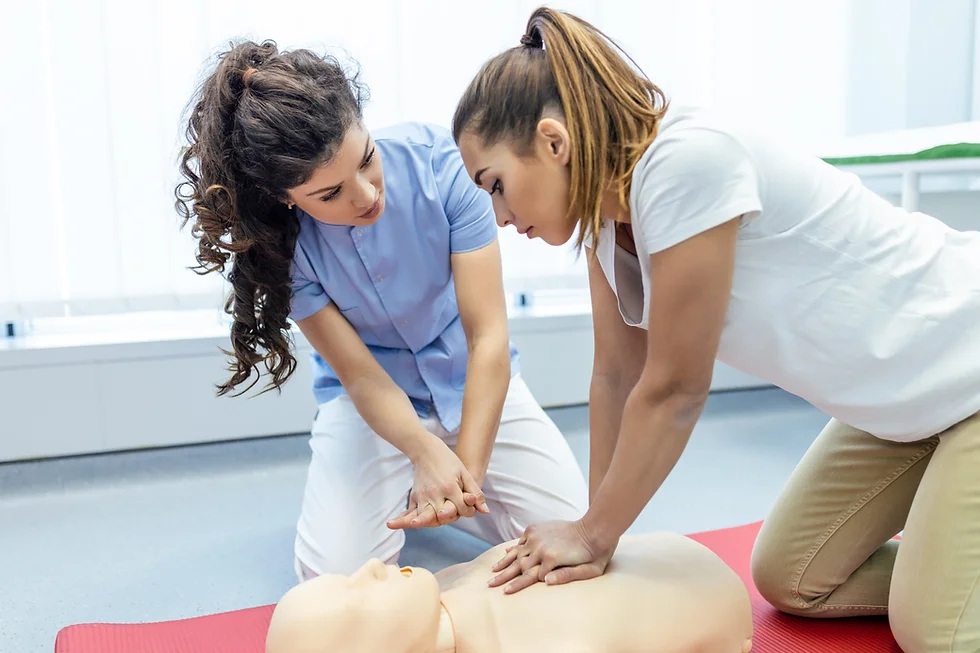In the face of cardiac emergencies, having the right skills to respond can make the difference between life and death. In places like Australia, Brisbane first aid courses provide invaluable knowledge and practical skills that can save lives.
Engaging in first aid and CPR training near me ensures you are prepared to act with confidence and effectiveness when every moment matters. Grasping the importance of first aid and CPR in cardiac emergencies is essential not only for medical professionals but for everyone. Timely intervention through these skills can drastically enhance survival rates and outcomes.
Cardiac Emergencies: The Silent Threat
Cardiac emergencies, such as sudden cardiac arrest (SCA) and heart attacks, are among the leading causes of death worldwide. In Australia alone, more than 20,000 people suffer from out-of-hospital cardiac arrests each year. Unfortunately, only a small percentage of these individuals survive due to the delay in receiving immediate care. Cardiac emergencies occur without warning, and victims can lose consciousness within minutes. Without intervention, brain damage begins within 4-6 minutes, making quick and efficient response crucial.
Sudden Cardiac Arrest vs. Heart Attack
Understanding the distinction between sudden cardiac arrest and a heart attack is important in recognizing the severity of a cardiac emergency:
Sudden Cardiac Arrest (SCA): SCA is an electrical malfunction in the heart that causes it to stop beating unexpectedly. As a result, blood flow to the brain and other vital organs is halted, leading to immediate unconsciousness. If CPR and defibrillation are not administered promptly, death can occur within minutes.
Heart Attack: A heart attack, on the other hand, occurs when blood flow to a part of the heart is blocked due to a clot or plaque buildup in the coronary arteries. While a heart attack can lead to cardiac arrest, it is a circulation problem rather than an electrical one. Immediate medical attention is still crucial, but the window for intervention is often wider than with SCA.
Why First Aid and CPR Matter in Cardiac Emergencies
The key to surviving a cardiac emergency is receiving prompt and appropriate care. CPR (cardiopulmonary resuscitation) is a life-saving technique that helps maintain blood flow to the brain and heart while waiting for emergency medical services (EMS) to arrive. Administering CPR, particularly chest compressions, helps pump blood to vital organs, keeping the body’s systems functioning.
Moreover, having first aid knowledge empowers individuals to assess the situation, provide immediate care, and take action before professional help arrives. First aid and CPR training teaches people to recognize cardiac emergencies, understand the chain of survival, and apply the right techniques to keep the victim alive.
First Aid Training: The Foundation for Lifesaving Skills
The increasing availability of first aid courses makes it easier than ever to access life-saving training. These courses provide comprehensive knowledge of first aid techniques, including how to recognize cardiac emergencies, administer CPR, and use an AED. Practical hands-on sessions allow participants to practise these skills in a controlled environment, ensuring they feel confident and competent during a real emergency.
First aid and CPR training courses are designed to equip individuals with the knowledge and skills to respond to a range of emergencies. In the context of cardiac emergencies, participants learn how to:
- Assess the Situation: Identify whether the person is in cardiac arrest by checking for responsiveness, normal breathing, and a pulse.
- Initiate CPR: Begin chest compressions and rescue breaths if necessary. The focus is on providing high-quality chest compressions at a rate of 100 to 120 per minute.
- Use an AED: Automated external defibrillators are widely available in public places. Courses teach individuals how to operate an AED correctly and safely.
- Work as a Team: In some emergencies, multiple people may be involved in providing care. Effective communication and teamwork are essential for a successful outcome.
- Provide Care Until Help Arrives: First aid training emphasizes the importance of staying with the victim, providing continuous care, and communicating with emergency services until medical professionals take over.
The Role of AEDs in Cardiac Emergencies
One of the most critical tools in cardiac emergencies is the AED. These portable devices deliver a controlled electric shock to the heart to restore a normal rhythm in victims of sudden cardiac arrest. AEDs are simple to use and are designed to guide the user through the process with voice instructions.
For first aid responders, quick access to an AED can be the difference between life and death for a cardiac arrest victim. Studies show that if defibrillation is provided within 3-5 minutes of collapse, the chance of survival can be as high as 70%.
Many first aid and CPR training courses now include instruction on how to use AEDs. Knowing how to locate and use an AED is crucial for anyone who may encounter a cardiac emergency in a public space.
The Impact of Bystander CPR in Cardiac Emergencies
Bystander CPR is critical in out-of-hospital cardiac arrests. Unfortunately, studies indicate that fewer than 50% of people who suffer cardiac arrests outside of a hospital receive bystander CPR. This is often due to a lack of knowledge, training, or confidence in providing the necessary care.
First aid and CPR training aims to bridge this gap by equipping more people with the skills and confidence to act. In fact, individuals trained in CPR are more likely to respond in an emergency. Their intervention can help maintain vital functions and buy time until professional medical services arrive.
The survival rate for cardiac arrest victims decreases by approximately 10% for each minute that passes without CPR or defibrillation. Thus, increasing the number of people trained in CPR can have a profound impact on public health and the likelihood of survival in cardiac emergencies.
Cardiac Emergencies in High-Risk Groups
Certain populations are at a higher risk of cardiac emergencies. Individuals with preexisting heart conditions, older adults, and those with a family history of heart disease are particularly vulnerable. For these high-risk groups, immediate access to first aid and CPR-trained individuals can be lifesaving.
Workplaces, especially those with employees in high-risk categories, should prioritize first aid and CPR training near me. Having trained personnel on-site ensures that there is always someone ready to respond to cardiac emergencies, whether it’s an employee, customer, or visitor.
Conclusion
First aid and CPR are critical in responding to cardiac emergencies. Having the skills to recognize cardiac arrest, initiate CPR, and use an AED can make the difference between life and death. In a world where cardiac emergencies can strike unexpectedly, it is imperative that individuals take steps to educate themselves through first aid training courses.
As more people become trained in these essential skills, the chances of survival for cardiac arrest victims will increase, leading to better health outcomes and saved lives. Taking the initiative to become certified in first aid and CPR is not just a valuable personal skill; it is a civic responsibility that can help protect your community.
Also Read: How to Teach Childcare First Aid Remotely Using Zoom




